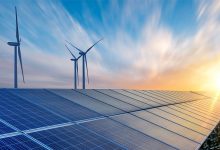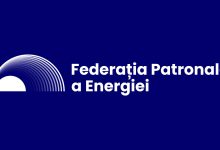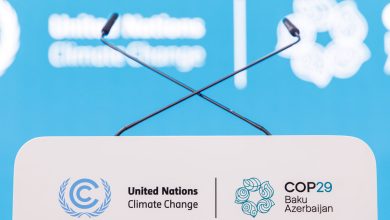Energy Tech Day 2022: Developing Technology to Power a Safe and Fair Energy Transition
On May 25th, Energy Industry Review organized, in Bucharest, the Energy Tech Day 2022: Developing Technology to Power a Safe and Fair Energy Transition. The focus was on low carbon technologies and strategies for further economic growth and sustainable environment.
High-level experts gathering
Top national and international energy business leaders addressed commercial, regulatory, geopolitical, and technical challenges impacting the future of the energy industry. There were important topics approached, such as mechanisms to promote a safe and fair energy transition; the European Green Deal challenges and opportunities; state-of-the-art technologies impacting each part of the value-added energy chain; smart solutions to maximize efficiency, reducing costs and CO2 emissions; regulatory framework to stimulate innovation and investment; environmentally responsible energy uses; industry funding.
Dan Dragos Dragan – Secretary of State, ROMANIAN MINISTRY OF ENERGY, pointed out that the energy sector is responsible for 75% of the EU GHG emissions and, in this regard, it is important to support the diversification of energy supply, accelerate transition to renewable energy and improve energy efficiency. The transition process reflects diverse priorities and entails a combination of abilities, technologies, policies, finance, and resources. The process must be just, inclusive, and systemic to ensure no one is left behind, he underlined. Most of the credible energy models show that natural gas is the optimal transition solution on the EU’s pathway towards climate neutrality by 2050, especially in regions and Member states heavily dependent on coal and oil. This is due to its potential of GHG and air pollutants emission reductions and its role as a flexible power source to back-up the massive deployment of intermittent generation. Reference was made to local funds, through the NRRP, for investments in the energy sector, amounting to EUR 1.62 billion, of which EUR 460 million for new electricity production capacities from renewable sources.
“We acknowledged the fact that a successful energy sector transition will stimulate economic growth and create new employment opportunities,” Dan-Dragos Dragan concluded.
Noticing the spectacular path to today’s advanced technologies, Nagy-Bege Zoltan – Vice President, ROMANIAN REGULATORY AUTHORITY FOR ENERGY (ANRE), emphasized the means for each consumer to increase their degree of energy efficiency. Among the solutions at ANRE’s disposal, he mentioned the technical and legislative means to integrate renewable sources, reminding that the institution is currently working to prepare the secondary legislation to transpose the relevant European rules. He also referred to the new geopolitical and energy market reality, which compels us to drastically speed up transition to clean energy and enhance Europe’s energy independence of non-reliable suppliers and volatile fossil fuels, also referring to the REPowerEU package.
The official also challenged the audience, asking the following question: given the current rapid pace of adopting electric vehicles, what transformations should the power grid undergo to cope with mobility?
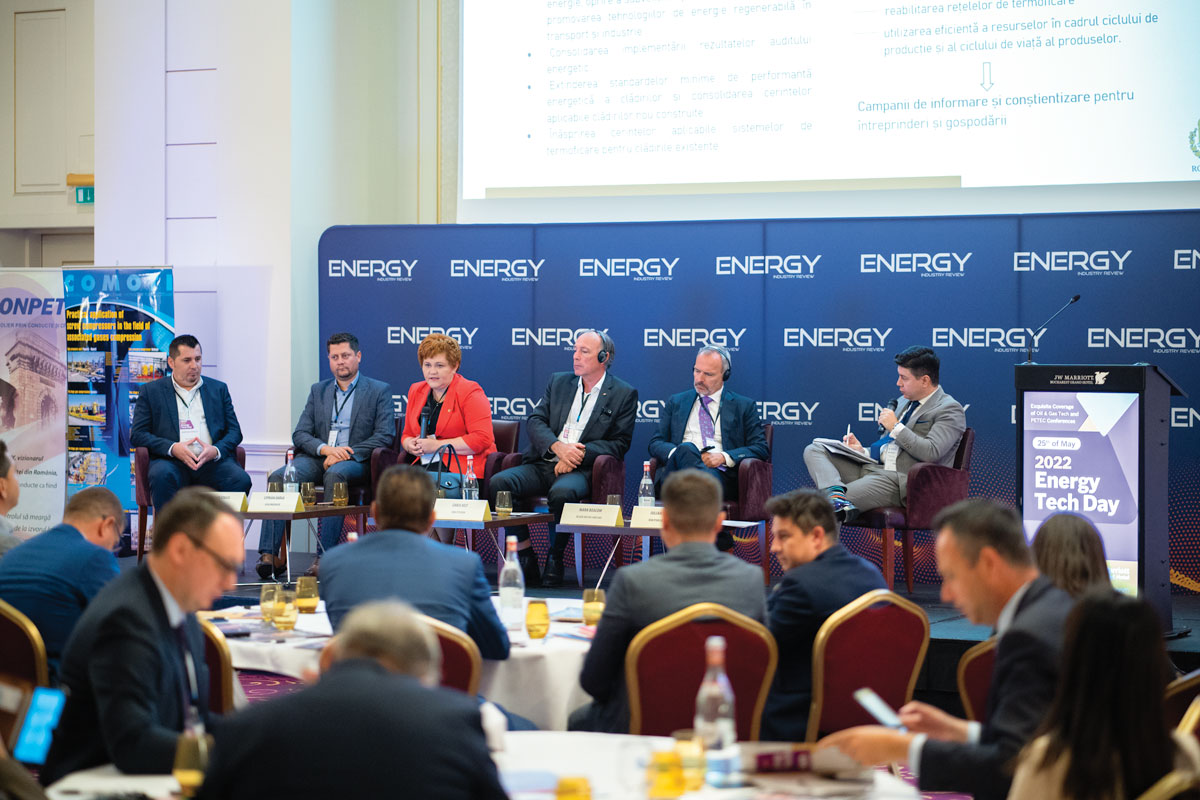
Changing Prospects, Challenges and Business Opportunities for Oil & Gas: Black to Finance Green
Over the past few years, the Oil and Gas Industry has seen a huge upgrade in terms of technological enhancements and not only. The EU aims to be climate-neutral by 2050 – an economy with net-zero greenhouse gas emissions. This objective is at the heart of the European Green Deal and in line with the EU’s commitment to global climate action under the Paris Agreement. Currently, fossil fuels still dominate the global energy system, accounting for more than 80% of the total energy supply. But the EU’s climate policy should strive for a fair and wise, and not a wild, energy transition, experts say. It should take account of diversification and the sustainable use of natural resources. In this regard, oil and gas companies explore new business opportunities, rethink strategies, and invest in their green future, developing low-carbon barrels of oil.
Midia Green Energy is just one example of a safe and fair energy transition. This is Black Sea Oil & Gas’ vision in line with the European Union’s Zero Emissions Goal by 2050 that is creating demand for the dramatically increasing use of renewable energy. Utilizing the already existing Midia Gas Development infrastructure provides a huge advantage to create synergies for developing emission free green energy production, said Mark Beacom – CEO, BLACK SEA OIL & GAS. According to him, Midia Green Energy offers four development opportunities: onshore solar parks, micro scale green hydrogen, large scale offshore wind farm, large scale green hydrogen. But besides opportunities (development possibility for solar, wind and green H2 using MGD’s existing infrastructure already built and paid out and a smoother energy transition), there are also some main challenges like missing legislation, slow regulatory adaptation, inherent development resistance, weak power infrastructure, high LCOE.
The same subject – transforming for a low carbon future, was addressed by Christopher Veit – Executive Board Member, Exploration & Production, OMV PETROM. The company is well placed to meet this demand with lower carbon Black Sea gas and significant investment in renewable power, biofuels, alternative mobility and new technologies and it is committed to achieving Net Zero operations by 2050. The company sees several opportunities in new energy technologies like carbon capture, utilization & storage, green and blue hydrogen production technologies. Christopher Veit also mentioned the strategic gas project for OMV Petrom – Neptun Deep, and the additional opportunities in the Black Sea: Han Asparuh offshore block in Bulgaria, Block II offshore Georgia.
During the journey to Net Zero, OMV Petrom is committed to achieving less than 0.2% methane intensity, detecting, and reducing fugitive emissions in E&P and R&M, phasing out the existing projects with routine flaring and venting, optimizing the E&P portfolio, producing electricity from associated gas or thermal energy, and generating renewable power for its own consumption.
OMV Petrom, the largest private investor in the Romanian energy sector with 11 bn EUR by 2030, has a key role in strengthening Romania and SE Europe’s security of supply and the EU’s energy resilience, Christopher Veit noted.
SCHLUMBERGER’s commitment to sustainability through technology was highlighted by Ciprian Oarga – Country Manager Romania. He revealed the company’s science-based approach to achieve Net Zero target by 2050. It has pledged to reduce its operational emissions, reduce emissions in customer operations and accelerate innovation in new Energy. The main pillars of Schlumberger’s transition technology portfolio focus on addressing methane emissions, reducing, or eliminating flaring, minimizing well construction CO2 footprint, full field development solutions, electrification of infrastructure. This growing portfolio consists of best-in-class technologies that drive high performance sustainably. Also, the company has identified, qualified, or is in the process of qualifying more than 100 environmental-impact-reducing technologies and solutions within its existing and near-commercial portfolio. Schlumberger continues to expand its portfolio to include transition technologies focused on reducing hazmat, promoting good water stewardship, reducing waste, reducing size.
New updates on EU methane regulation were brought by Adrian Staicu – Regional Manager South-Eastern Europe, THE SNIFFERS & EU Climate Change Ambassador. He reminded that on 15 December 2021, the European Commission released its proposal for a regulation on methane emissions reduction in the energy sector. The main goal of this regulation is to lay down rules for accurate measurement, reporting, and verification (MRV) of methane emissions by performing LDAR surveys and putting restrictions on venting and flaring. The feedback period to provide comments to this proposal has now been closed. If no changes were to be made to this proposal, it would be requested to (amongst others): create an inventory of all components that have been checked; have an LDAR survey performed within 6 months of the day the regulation enters into force; deliver a compliant LDAR report within 1 month to the authorities after each LDAR survey. To help companies without experience in this field, The Sniffers representatives would support a clear standard, such as an ISO 17025 accreditation for measurements according to EN 15446. In addition, instead of the currently proposed measurement frequency, they would rather suggest a more risk-based approach, with a lower measurement frequency if certain targets are met. The instrument is SFEMP – Sniffers Full Emissions Management Platform.
Oana-Marciana Özmen – Secretary of the Committee for Industries and Services, PARLIAMENT OF ROMANIA, underlined the importance of energy efficiency as an essential part of a safe and fair energy transition. She referred in particular to strengthening energy efficiency measures and creating an energy efficiency culture. REPowerEU plan provides for an increase from 9% to 13% in the mandatory energy efficiency target. This involves increasing national ambition on energy savings; introducing obligations to reduce energy consumption, stopping fossil fuel subsidies, and promoting renewable energy technologies in transport and industry; strengthening the implementation of energy audit results; expanding the minimum standards of energy performance of buildings and strengthening the requirements applicable to newly built buildings; tightening the requirements for district heating systems for existing buildings. As for the creation of an energy efficiency culture, it is necessary to boost building renovation, rehabilitation of heating networks and the efficient use of resources in the production cycle and the life cycle of products. But, to achieve these goals, information and awareness campaigns are needed, addressed to companies and households, Oana-Marciana Özmen also mentioned.
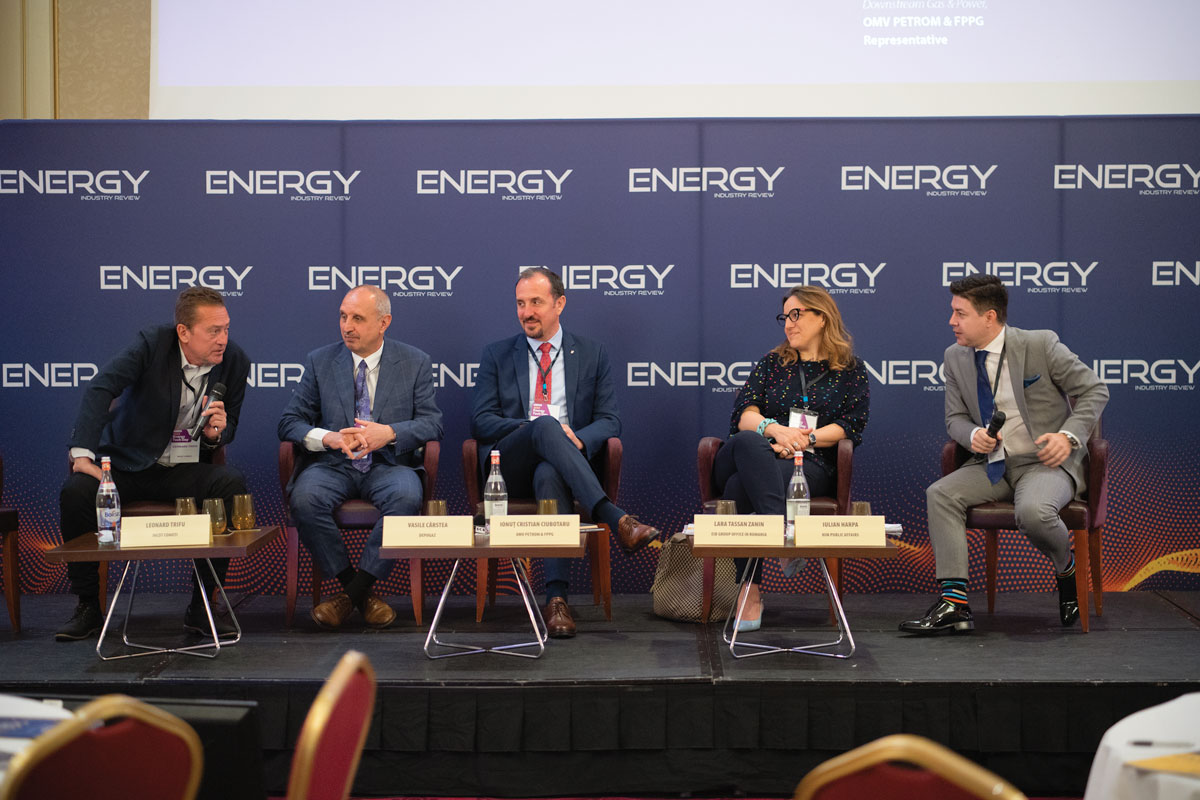
Bridging the Gap Between Reality and Future
No one truly knows what the future holds for us, but we all hope for a better environment in the years to come.
The mission of the European Investment Bank (EIB) is to foster sustainable growth within the EU and abroad. It is firmly committed to sustainable development, which is the foundation of EIB business model, Lara Tassan Zanin – Head of EIB GROUP Office in Romania, stated. Financing green transition to low carbon economy, supporting innovation, SMEs and infrastructure in Romania were the topics of her speech.
The EIB is the EU’s climate bank and one of the world’s main financiers of climate action. It estimates and reports greenhouse gas emissions from projects where emissions are expected to be significant. The EIB also advices the authorities to prepare projects on time and within budget. It is worth mentioning that over the last 31 years, the EIB Group has provided more than EUR 18 billion for public and private sector investment across Romania, out of which over EUR 1.2 Bn for energy investments.
It seems that for COMOTI – National Research & Development Institute for Gas Turbines, the main mission is to put Romania on the world map. The institution’s key areas of activity are Aerospace, Energy & Saving Energy, Environment and Defence.
In his presentation, Leonard Trifu – Marketing Manager, focused mainly but not exclusively on COMOTI’s customized solutions for natural gas exploitation and transmission. The company is renowned for development of Romanian industrial gas turbines (1.5-5.4 MW), high-efficient generation of electric and thermal power with gas turbines (CHP), high-efficient centrifugal and screw compressors for air and natural gas, and renewable energy (biomass gasification for industrial GT, wind turbines, biofuels). The capabilities of COMOTI comprise design; 3D modelling, CFD/numerical simulation, stress & vibrations analysis; automation of energetic groups, general revisions, service, maintenance; dynamic balancing, inspection and oil analysis, compressors test bench. Last but not least, we should mention the company’s major achievements in aerospace and defence industry making Romania well known abroad.
The role of gas storage in the domestic market and ensuring the security of supply was highlighted by Vasile Carstea – General Manager of DEPOGAZ, the main natural gas storage operator in Romania. The 5 UGS facilities operated by DEPOGAZ, namely Bilciuresti, Ghercesti, Sarmasel, Urziceni and Balaceanca, are developed in depleted gas fields and hold a total active capacity of 2.770 billion cubic meters. In the context of regional developments, the company’s current concerns focus on further development of storage, injection, and withdrawal capacities, allowing to ensure the security of supply with natural gas at national and European levels. The current maximum technical capacities (for storage, injection, and withdrawal) of the 5 units, as well as the estimated targets for the following period were presented.
Vasile Carstea also noted that ‘Bilciuresti daily withdrawal capacity increase’ is on the EU fifth list of energy Projects of Common Interest.
Speaking of green future, clean hydrogen is seen as the future fuel of the EU, promising to deliver an abundance of carbon-neutral energy by 2030.
Hydrogen is one of the solutions to decarbonize industries, as well to decarbonize natural gas, said Ionut Ciubotaru – THE OIL AND GAS EMPLOYERS’ FEDERATION (FPPG) Representative. For Romania, blue hydrogen is a must to cover the total demand of H2, giving the high amount of green power needed to produce 1 t of green hydrogen, he added. Analysing hydrogen production alternatives, Ionut Ciubotaru pointed out that Romania has the resources for blue hydrogen production and capabilities, building on legacy and the Black Sea gas. The Black Sea gas offers a huge opportunity for Romania not only to strengthen the energy security, but also to enable the energy transition, including the hydrogen economy, to bring additional budget revenues and create jobs. The budgetary impact of investment in Black Sea gas could be EUR 1 billion/year according to a study drawn up by PwC Romania for FPPG. Black Sea gas can turn Romania into EU’s largest gas producer, the FPPG representative underlined. Moreover, Romania has plenty of options for CO2 storage, considering the range of depleted oil and gas reservoirs, but also saline formations and thus Romania can become the blue hydrogen valley of Europe.

Low Carbon Technologies for Sustainable Environment
We are undergoing an energy transition towards an efficient, clean, low-carbon, and diversified energy mix. Low-carbon technologies such as carbon capture, utilization, and storage (CCUS), hydrogen, photovoltaics and so on can help significantly reduce GHG emissions, promote access to energy and enhance productive energy use.
More than half of the budget in Romania’s National Recovery and Resilience Plan is allocated to green transition. One of the ways energy companies can accomplish this objective is by redefining their corporate strategy to align more effectively with climate change.
TRANSELECTRICA is one of the companies in Romania reconfiguring the energy system and the power grid in line with the new directions established under the European legislative packages ‘Green Deal’ and ‘Fit for 55’, to ensure the transition to a carbon-neutral economy. Transelectrica is the Romanian Transmission and System Operator, which plays a key role in the Romanian electricity market.
The company’s position in the green transition was presented by Catalin Chimirel – Manager for Energy Efficiency and New Technologies. Thus, Transelectrica is committed to developing the transmission grid and associated interconnectors; developing IT facilities for smooth grid operation and market integration; encouraging storage projects; digitalization of administrative and operational processes; improving energy efficiency.
The importance of oil & gas industry’s technical experience, legacy data & best practice in the energy transition was highlighted by Chris Hughes – Director, CARBONSCALE UK. Summarizing, both geothermal and CCS/CCUS have an important role in the energy transition mix and offer significant benefits in the fight against climate change. The oil and gas industry has invaluable skills in terms of personnel and experience that can be applied to the development of both geothermal and CCS. The industry and its track record of safe and environmentally responsible development of hydrocarbon production can provide the energy transition business huge resources, cutting risk and ensuring safe, financially viable resource exploitation. Oil and gas developments and the vast historic data legacy and subsurface interpretation processes provide a critical success factor in the development of key energy transition projects. As the shale revolution in North America has proven, it is far more advantageous to explore with the archive first before exploring with the drill bit, Chris Hughes underlined.
Another important aspect in Romania’s energy transition is ensuring the workforce. We have the opportunity to develop new industries, especially in the field of renewable resources, to create new jobs and generate added value in the economy. According to a Deloitte Romania study, EUR 1 billion directly invested in wind farms will generate EUR 2.177 billion in the economy of the country, with an additional direct impact of EUR 2.95 billion during 2021-2030. Between 2022 and 2025 several wind and PV plants will be under construction. The regions that have high-capacity factor in wind will only start building in 2023 and 2024. The first wind capacity will be commissioned in Q2 2023. By the end of 2023 more than 500MW of PV will be built and commissioned. Between 2023 and 2030 an average of 600MW/year of wind and PV plants will be built. According to the statistics, slightly more than 25,000 employees will have to be reskilled to build and operate the new RES capacity. RenewAcad, the Academy of Counselling and Vocational Training for Renewable Energy Sources, a project presented by Sebastian Enache – Business Development Manager, MONSSON OPERATION, responds to this challenge. The project is aimed at retraining employees in areas affected by energy transition, miners, and personnel in the Romanian coal sector, to become specialists in the field of renewable energy and electricity distribution.
Ancuta Pop – Partner, IJDELEA & ASSOCIATES, elaborated on the National Recovery and Resilience Plan (NRRP) as a means for reaching Sustainable Development Goals (SDG) targets. She insisted on ‘Affordable and Clean Energy’ and ‘Industry, Innovation and Infrastructure’. Regarding Energy, NRRP measures refer to: new electricity production capacities from renewable energy sources – wind and solar (budget: EUR 460 million); renewable gases distribution networks (use of natural gas in combination with green hydrogen as a transitional measure), as well as green hydrogen production capacities and/or its use for electricity storage (budget: EUR 515 million); development of flexible and highly efficient gas production capacities for cogeneration of electricity and heat (CHP) in district heating, in order to achieve a deep decarbonization (budget: EUR 300 million); industrial chain for the production and/or assembly and/or recycling of batteries, cells and photovoltaic panels (including auxiliary equipment), as well as new electricity storage capacity (budget: EUR 280 mil.); ensuring energy efficiency in the industrial sector.
Creating trust through transparency and traceability of data in climate reporting is of major importance, explained Claudia Stancu – Certification Manager, BUREAU VERITAS (BV) ROMANIA. Transparency needs to be at the core of sustainability because it rests on measurable results which can be clearly communicated and trusted. Transparency offers an assurance that actions taken towards sustainability are relevant for both business and the environment. Another critical component in determining sustainability, data traceability, it is the verification, through documentation, of the source of data. Traceability follows processes and documents the inputs from inception to outcome. It verifies whether each step taken is accounted for when calculating impacts. It is another step when validating sustainability in reporting. She also presented a case study – of the Orlen Group, whose goal is to reach carbon neutrality by 2050, to show how BV can help prepare the carbon footprint calculation methodology that combines the best industrial practices with country-specific requirements, along with international recognized standards.
At the end of the day, maybe each of us should exercise responsibility and ask what we can do to reduce our impact on the environment. But that’s another story…



